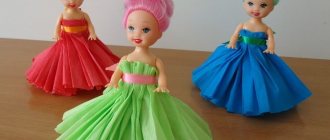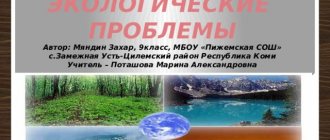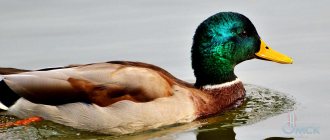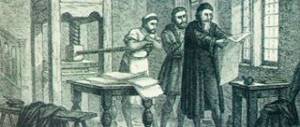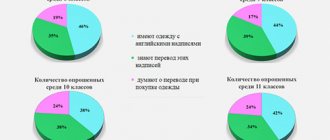Presentation on literature “Epics” 7th grade presentation for a lesson on literature (7th grade) on the topic
Slide 1
Epics Literature lesson in 7th grade
Slide 2
Contents Definition of epics Features of epics Main cycles of epics Kiev cycle of epics Novgorod cycle of epics Reflection of the plots of epics in art Tasks on epics Test of knowledge of epics
Slide 3
Definition of epics Bylinas (from the word “byl”) are works of oral poetry about Russian heroes and folk heroes.
Slide 4
Features of the epic Exists since ancient times Description of the exploits of heroes The epic is not characterized by an accurate transfer of historical facts The epic captures historical reality in generalized images Song-poetic form The epic was “told” - sung or spoken accompanied by a gusli There is a beginning, an ending, repetitions, hyperboles, constant epithets
Slide 5
Main cycles of epics Kyiv cycle Novgorod cycle
Slide 6
Kiev cycle of epics The action takes place in or near Kiev. At the center of the story is Prince Vladimir. The main theme is the defense of the Russian land from nomads.
Slide 7
Kiev cycle of epics Heroes Heroes of the Kyiv cycle - Ilya Muromets, Dobrynya Nikitich, Alyosha Popovich, Volga and Mikula, Duke
Slide 8
Novgorod cycle of epics Heroes of the Novgorod cycle - Sadko, Vasily Buslaev Social themes are touched upon The action takes place in Novgorod Sadko at the Sea King
Slide 9
Reflection of the plots of epics in art In the art gallery Viktor Mikhailovich Vasnetsov “Bogatyrs”, 1898
Slide 10
Reflection of the plots of epics in art In the art gallery Ivan Yakovlevich Bilibin “Volga and Mikula”
Slide 11
Reflection of the plots of epics in art In the art gallery Nicholas Roerich “Overseas Guests”, 1901
Slide 12
Reflection of the plots of epics in art In the art gallery Nicholas Roerich “Mikula Selyaninovich”, 1910
Slide 13
Reflection of the plots of epics in art In the art gallery Nikolai Karanzin “Sadko - the rich guest”
Slide 14
Reflection of the plots of epics in art In the art gallery of L. Fomichev “Ilya Muromets and the Passing Kaliki” “Ilya Muromets and the Nightingale the Robber”
Slide 15
Reflection of the plots of epics in art Musical page Nikolai Andreevich Rimsky-Korsakov – opera “Sadko” Grechaninov – opera “Dobrynya Nikitich” Mussorgsky Modest Petrovich – “Pictures at an Exhibition” (“Bogatyr Gate”
Slide 16
Reflection of the plots of epics in art Cinematography Feature films: “Ilya Muromets” “Sadko” Animated films: “Alyosha Popovich and Tugarin the Serpent” “Dobrynya Nikitich and the Serpent Gorynych” “Ilya Muromets and the Nightingale the Robber”
Slide 17
Assignments on epics Vocabulary work Explain the meaning of the words: Oh, you are a goy Kalika, a passer-by, A gagging birch, A belly, A dammed road.
Slide 18
Tasks on epics 1. What traditional parts does a traditional epic consist of? 2. Name the similarities and differences between fairy tales and epics. 3. Where was Ilya Muromets born?
Slide 19
Tasks on epics Determine the features of the Kyiv and Novgorod cycles of epics: Feats are performed in the name of the prince, who has heroes in his service. Heroes: Ilya Muromets, Dobrynya Nikitich, Alyosha Popovich. The hero's assistants are Kaliki. Heroes: Vasily Buslaev, Sadko. The place of the main actions is Kyiv. In one of the epics, Saint Nicholas helps the hero. The heroes are contrasted with Nightingale the Robber and Kalin the Tsar. The hero is contrasted with the Sea King. The place of the main events is Novgorod. Feats are performed not to protect the Motherland from invaders, but at the call of the heart.
Slide 20
Test on the topic “Epics” The city in which the first battle of Ilya Muromets took place in the epic “Ilya Muromets and the Nightingale the Robber”? A) Chernigov B) Kyiv C) Novgorod The actions of Ilya Muromets are guided by: A) A sense of responsibility to the Motherland B) Personal gain C) Vanity
Slide 21
Test on the topic “Epics” 3. The main defender of justice in Rus': A) Alyosha Popovich B) Dobrynya Nikitich C) Ilya Muromets 4. The son of the Serpent and the earthly woman: A) Nightingale the Robber B) Mikula Selyaninovich C) Volga
Slide 22
Answers to the test 1. A 2. A 3. B 4. B
Literature. 7th grade (1 part) Epics
Epics
M. Gorky Already a thousand years ago, no one in Rus' could testify since when it became customary to sing epics and tell fairy tales. They were passed down from their ancestors along with customs and rituals, with those skills without which you can’t build a hut, you can’t get honey, you can’t carve spoons. These were a kind of spiritual commandments, covenants that the people honored. The builder was erecting a temple - it turned out to be a spacious chamber, under the dome of which a ray of sunlight streamed and played from narrow openings in the wall, as if a dwelling had been built for fairy-tale and epic heroes. ... Such was the power of poetic legend, the power of fairy-tale invention. Where is the secret of this omnipotence? It is in the closest and most direct connection with the entire way of life of the Russian person. For the same reason, the world and way of life of Russian peasant life formed the basis of epic and fairy-tale creativity. Bylinas (from the word “byl”) are works of oral poetry about Russian heroes and folk heroes. The action of the epics takes place in Kiev, in spacious stone chambers - gridnitsa, on Kiev streets, at the Dnieper piers, in the cathedral church, in the wide princely courtyard, in the shopping areas of Novgorod, on the bridge over the Volkhov, in different parts of the Novgorod land, in other cities: Chernigov, Rostov, Murom, Galich. Even then, in an era far from us, Rus' conducted brisk trade with its neighbors. Therefore, the epics mention the famous route “from the Varangians to the Greeks”: from the Varangian (Baltic) Sea to the Neva River along Lake Ladoga, along the Volkhov and Dnieper. The singers sang the breadth of the Russian land, spread out under the high sky, and the depth of the Dnieper pools: Is it the height, the height of the sky, the depth, the depth of the ocean-sea, the wide expanse throughout the whole earth, the deep pools of the Dnieper. The storytellers also knew about distant lands: about the land of Vedenetsk (most likely Venice), about the rich Indian kingdom, Constantinople, and various cities of the Middle East. Many reliable features of ancient life and life give the epics documentary value. They tell about the structure of the first cities. Behind the city walls that protected the village, the expanse of an open field immediately began: the heroes on strong horses did not wait until the gates were opened, but galloped through the corner tower and immediately found themselves in the open air. Only later did cities develop unprotected “suburbs.” A good horse was held in high esteem in Rus'. The caring owner looked after him and knew his worth. One of the epic heroes, Ivan, the guest’s son, bets “a great bet” that on his three-year-old Burochka-kosmatochka he will outrun all the princely stallions, and Mikulina’s filly beat the prince’s horse, contrary to the proverb “The horse plows, the horse is under saddle.” A faithful horse warns its owner of danger - it neighs “at the top of its head” and beats its hooves to wake up the hero. The storytellers told us about wall decorations in state houses. The characters' clothes are smart. Even Oratai Mikula wears non-work clothes - a shirt and ports, as it happened in reality: The orata has a feather hat, And his caftan is black velvet. This is not fiction, but the reality of ancient Russian festive life. The horse harness and boat-ships are discussed in detail. The singers try not to miss a single detail... No matter how valuable these features of ancient life are, the thoughts and feelings of the people embodied in epics are even more valuable. It is important for people of the 21st century to understand why people sang about heroes and their glorious deeds. Who are they, Russian heroes, in the name of what do they perform feats and what do they protect? Ilya Muromets is driving through impenetrable, impassable forests on a nearby, direct, and not a roundabout, long road. He has no fear of the Nightingale the Robber blocking the passage. This is not an imaginary danger or an imaginary road. North-Eastern Rus' with the cities of Vladimir, Suzdal, Ryazan, Murom was once separated from the Dnieper region with the capital Kiev and adjacent lands by dense forests. Only in the middle of the 12th century was a road built through the forest wilds - from the Oka to the Dnieper. Before this, it was necessary to go around the forests, heading to the upper reaches of the Volga, and from there to the Dnieper and along it to Kyiv. However, even after the direct road was laid, many preferred the old one: the new road was restless - people were robbed and killed on it... Ilya made the road free, and his feat was highly appreciated by his contemporaries. The epic developed the idea of a single strong state capable of establishing order within the country and repelling enemy invasions. An example of fidelity to military duty is also shown by another warrior-hero, glorified in epics under the name of Dobrynya Nikitich. In battles with the fiery Serpent, he wins twice. Bogatyrs fight enemies in the name of the peace and well-being of Rus'; they defend their native land from all who encroached on its freedom. Guslars. thin V. Vasnetsov As creations of peasant Rus', epics willingly depicted not only the events of the heroic defense of the country, but the affairs and events of everyday life: they talked about work in the arable land, matchmaking and rivalry, horse competitions, trade and long journeys, about incidents from urban life, about a dispute and fist fights, about amusements and buffoonery. But such epics did not just entertain: the singer taught and instructed, shared with listeners his innermost thoughts about how to live. In the epic about the farmer Mikul and Prince Volga, the peasant idea is expressed with all clarity. The everyday work of the peasant is placed above the military. Mikula's arable land is vast, his plow is heavy, but he can easily handle it, and the prince's squad does not know how to approach it - they do not know how to pull it out of the ground. The singers' sympathies are entirely with Mikula. The time of Ancient Rus' also affected the artistic structure itself, the rhythms, and the structure of the verse of epics. They differ from the later songs of the Russian people in the grandeur of their images, the importance of the action, and the solemnity of their tone. Epics arose at a time when singing and storytelling had not yet diverged much from each other. The singing added solemnity to the story. The epic verse is special, it is adapted to convey lively conversational intonations: From either the city of Murom, from that village and Karacharova, a distant, portly, kind fellow was leaving. The song lines are light and natural: repetitions of individual words and prepositions do not interfere with the transmission of meaning. In epics, as in fairy tales, there are beginnings (they tell about the time and place of action), endings, repetitions, exaggerations (hyperboles), constant epithets (“clean field”, “good fellow”). There is no rhyme in epics: it would complicate the natural flow of speech, but still the singers did not completely abandon consonances. The verses are consonant with homogeneous endings of words: So all the grass-ants were entwined and the azure flowers fell off... In ancient times, the singing of epics was accompanied by playing the harp. Musicians believe that the harp is the most suitable instrument for playing along with words: the measured sounds of the harp did not drown out the singing and were conducive to the perception of epics. Composers appreciated the beauty of epic melodies. M. P. Mussorgsky, N. A. Rimsky-Korsakov used them in operas and symphonic works. In the art of epics, a connection seemed to be realized between the times of Ancient Rus' and our era. The art of past centuries did not become a museum thing, interesting only to a few specialists; it joined the stream of experiences and thoughts of modern man. V. P. Anikin Question and task
About the collection, performance, meaning of epics The earliest recordings of epics were made in the 17th century, and the first publications of texts in the 18th century belonged to the writers M. Chulkov, N. Novikov, I. Dmitriev. An important event was the publication in 1804 of the collection “Ancient Russian Poems”, compiled by Kirsha Danilov. In the 30s of the 19th century, P. Kireevsky began collecting works of oral folk art, who appealed to writers to record and collect folklore. Many responded to the call: A. S. Pushkin, N. V. Gogol, A. V. Koltsov, V. I. Dal. In 1861-1867, four volumes of “Songs collected by P. Rybnikov” were published, which included 165 epics. In 1871, A. Hilferding set off in Rybnikov’s footsteps. He recorded 270 epics from 70 storytellers - this is how three volumes of “Onega epics” were born. They were followed by the publication of “Russian epics of old and new zalisia”, as well as Pechora, White Sea, Onega, and Don epics. F. Buslaev, O. Miller, A. Veselovsky and many other folklorists actively studied these literary monuments. V. Anikin divides the epics into the most ancient (pre-Kiev) epics: these are the epics about the Volkh, Danube, Potyk; Kyiv - about Dobrynya, Sukhman, Danil Lovchanin, Churil, Solovy Budimirovich; Vladimir-Suzdal - about Ilya Muromets, Alyosha Popovich; Galician-Volynian - about Duke; Pskov-Novgorod - about Volga and Mikul, Sadko, Vasily Buslaev; Chernigov - about Ivan - the guest's son; Bryansk - about Prince Roman and the Livik brothers... Two main cycles of epics - Kiev and Novgorod - developed during the heyday of Kyiv and Novgorod. The Kiev cycle has a number of features: the action takes place in or near Kyiv; in the center of the story is Prince Vladimir; the main theme is the protection of the Russian land from nomads; historical circumstances and life are characteristic of Kievan Rus. Another feature of the Kyiv cycle was the images of three heroes - Ilya Muromets, Dobrynya Nikitich, Alyosha Popovich, the heroes of social and everyday epics - Volga and Mikula, Duke, etc. Novgorod tales include tales about Sadko, Vasily Buslaev, and others. They touch on social themes, and this is due to the uniqueness of life in Novgorod, which traded with many countries. The listener or reader will personally imagine both parts of the city and the bridge connecting them across the Volkhov, shopping arcades, the life of the merchants, the influence of the Church, strong family orders, trips to other countries. Almost all epics in the 19th and 20th centuries were recorded from peasants. Among the peasants, they were sung not only by master storytellers, but also by ordinary peasants - T. Ryabinin, V. Shchegolenok and others. This art was passed on from generation to generation - for example, Trofim Grigorievich Ryabinin taught this to his son Ivan, from whom he adopted the singing of epics. his stepson, and from him his son - Peter. Possessing high artistic merit and rich life content, epics played a prominent role in the development of Russian art - literature, music, painting. Pushkin, Nekrasov, Tolstoy, Gorky turned to their subjects. Rimsky-Korsakov in the opera “Sadko”, Grechaninov in the opera “Dobrynya Nikitich”, Vasnetsov in “Three Knights”, “The Knight at the Crossroads”, Repin in “Sadko” were inspired by the plots and images of epics, enriching Russian literature with the experience of folk art. Russian epics are widely translated into many languages of the world. According to the book N. Kravtsova, S. Lazutina “Russian oral folk art” In the folk art laboratory
|
